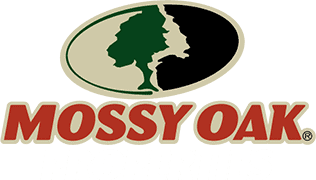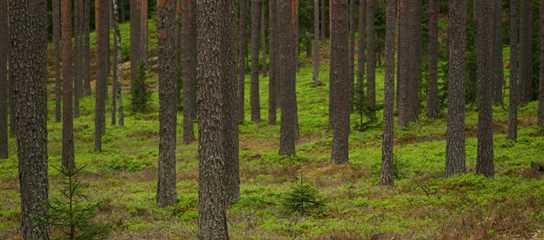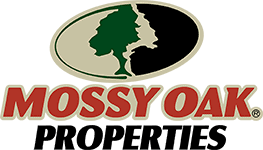Jeff Dennis | Originally published in GameKeepers: Farming for Wildlife Magazine. To subscribe, click here.
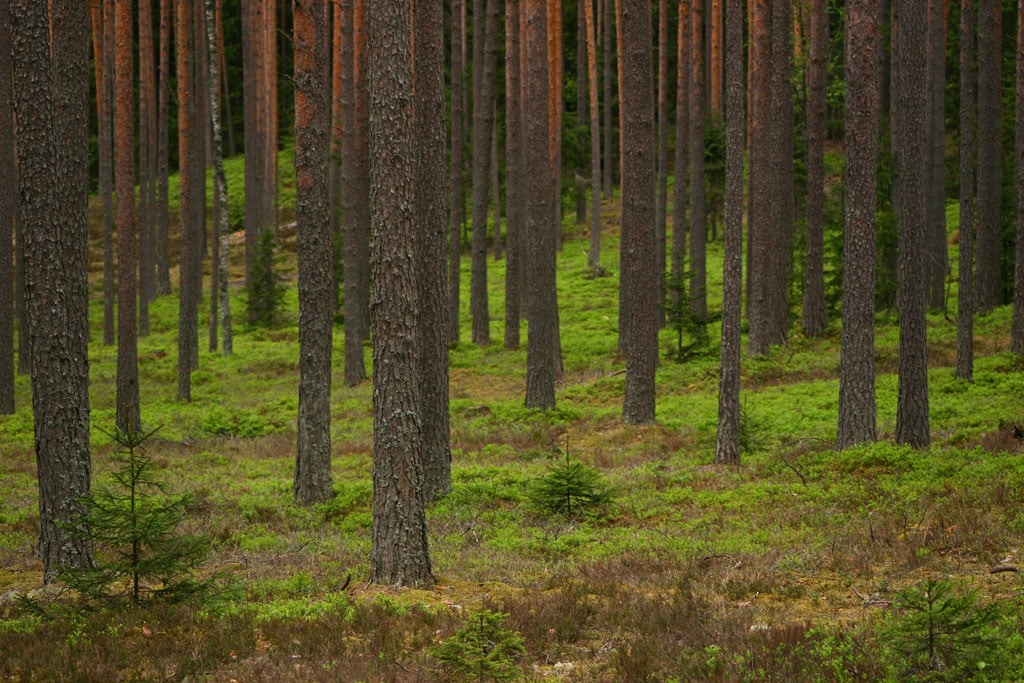
The same gamekeepers who enjoy farming for wildlife might also need help in defraying some of the costs associated with stewardship. Planting trees in order to rake pinestraw is but one of the ways recreational property can yield modest dividends. With hunting leases, it’s a numbers game with the bigger the acreage the better the income, but for most small private landowners anything that pays some money into the pot makes the farm chores just a bit easier to accomplish.
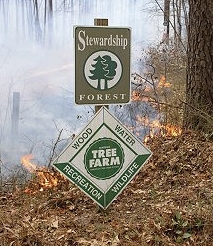
important if you wish top dollar
from your property’s resources.
Whether it’s timber sales or for
a hunting lease, a healthy
stand will fetch the highest
price. Fire is necessary in
some timber stands to scarify
seeds and remove debris.
Timber sales will likely be the most lucrative transaction on any acreage, but timber harvest is only intermittent. Slow-growing pine trees can only be thinned a few times before the final clear cut takes place, and then it’s back to the waiting game. Timber sales are also subject to the demand from the market, with the recent economic recession and downturn in housing creating low prices for a time. And sometimes when it’s time to thin trees, markets are trumped by the health of the stand.
Any final stage timber cutting is the equivalent of a home run for one’s checkbook. However, most folks don’t live long enough to see many clear cuts. One example is a gentleman I know who is 88 years old who had the family farm passed down to him. He told me that he has seen one portion of the property clearcut and grown back only twice in his life. Consider many landowners don’t get the early start he did to watch the property transform over the years, so most folks might get to be at bat for only one such “home run” in their life.
Playing small ball might be a better game plan for someone who tends a smaller acreage and who puts an emphasis on aesthetics, rather than clear cuts. These gamekeepers can look for payment programs form the U.S. government, utility companies, communications companies, hunting leases and sustainable harvest of their natural resources. Stringing together some “singles” along the way may help with getting over the hump on lean years in the budget process, where every little bit helps.
In terms of an annual income, hunting leases have to top the list.
As the popularity of hunting increases, like in the case of waterfowling due to a popular reality show, it’s a safe bet that the price for leases are trending upward but not skyrocketing. Considering there will be more demand and the same amount of hunting acreage, setting up a portion of your property for a lease provides a yearly income.
One example is an 1800-acre deer hunting lease on the East Coast that draws interest from Florida, Georgia and South Carolina. The price is $8 an acre and generates $17,000 per year for the gamekeeper-owner. Large leases mean more members, and this hunt club has 14 members, and most of them travel form out of town to hunt. Campers are allowed on the property with rental and electricity fees (from walk-in cooler, etc.) that generate more income for the owner.
A hunting lease that allows for more than a single species of game can demand a higher price. One example is a 900-acre lease for ducks, doves and deer that collects $15 per acre, translating into about $10,000 annually. Heck, in the right spot a duck blind alone can bring in $10,000 per season, so a lot has to do with demand. Splitting up a lease can be tricky, but selling rights for separate species that have different seasons brings in more money. For instance, turkey rights in spring, deer rights in fall and rabbit or raccoon rights in winter.
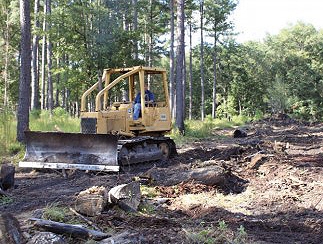
your property’s value when leasing to hunters
and leasing your property can help to pay for
cool tools like this dozer.
The cost-share programs of the National Resources Conservation Service are directly tied to the Farm Bill that passes through Congress every few years. The CRP program, which paid landowners to plant pine trees, was likely their best known and most successful program. My own experience dealt with their WHIP program, and wildlife habitat enhancement vehicle that paid for disking, mowing and burning. Almost all of their contracts are for a limited duration, so they require constant monitoring.
The National Wildlife Federation held a Farm Bill Summit in Georgia that I attended in 2009, and I came away with the feeling that the common landowner could not comprehend this legislation. Not much has changed since then, except that the funding has been slashed during the recession. Seek out your local NRCS Farm Service Agency office, and communicate your desires and let them see if any programs would be a good fit.
Two niche ideas for income include powerline right of way management fees and cell phone tower lease fees. With two powerlines running across our property, we were once enrolled in a mowing contract with the utility that paid us to maintain the powerline. The program has since been discontinued in my area, but perhaps something similar exists in your area. Having a cell phone tower placed on your land might reduce the aesthetics, but it comes with a steady check in the mail each month. Can you hear me now?!
Raking pinestraw is an endeavor that is also raising awareness about planting more longleaf pine trees, native to the Southeast. “There are some front ends costs with this type of operation, but there is also a ‘gravy’ period that can last nearly two decades,” said landowner Angus Lawton. Did you know that regular pinestraw from slash or loblolly trees is regarded as secondary to longleaf straw because of its superior length, coloration and durability?
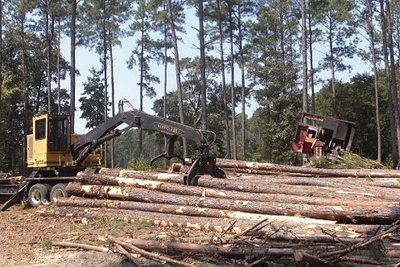
run” for one’s checkbook. However, most folks don’t live
long enough to see many clear cuts in their lifetime.
Planting longleaf pines for raking requires proper spacing, and upkeep and care for the first eight or nine years. Longleaf survival can be tricky and a 75-percent ratio is considered a success. So the upfront costs begin with using containerized seedlings, which cost more but are heartier. Mowing the stand to reduce competition has to be done during these first years, and herbicides also need to be applied, with no income from raking.
However, the burden shifts from the landowner to a qualified pinestraw operator about year ten, and a ballpark figure of $20 per acre will be the income for the next few years. The operator assumes all maintenance of the site, and they take care of the sale of the straw as well. A lot depends on the level of care any operator employs, so landowners may have a tricky time finding someone who is the right fit for them.
If all goes well then years thirteen through twenty will produce a bonanza of pine straw as the trees begin to grow more. Prices like $50 to the acre or more for pinestraw can provide quite a boost. While the prime-time of raking does not last forever, the conservationist in me says that planting longleaf provides landowners with intangibles like trees that are more beetle-resistant, hurricane-ready and they can restore the native ecosystem.
Speaking of timber and conservation, many gamekeepers have likely heard of the Tree Farm System. Membership in Tree Farm has always been free, due to the support of the timber industry, and their attractive metal sign adorns gates across the country. With the changes in the timber market after the housing bust, the financial support for Tree Farm is waning, and the entire system is under a transformation right now to a fee-based system. South Carolina is one of four states in a pilot program to make the changeover on 1/1/2014, so I am now paying to be a Tree Farm member.
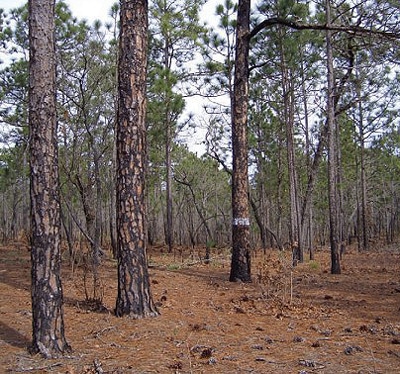
pines reach about 10 years old. So there are some front
end costs initially, but there is also a profitable period that
can last for nearly two decades.
“The key difference is that before the program was one of recognition, you joined for free and were counted in the Tree Farm ranks,” said Eric Smith, Certification Manager with Kapstone. “Now you join Tree Farm and your wood undergoes an inspection that leads to certification.” Certified wood is a new term to some, but it has been percolating for a while, and both Tree Farm and certified wood are recognized globally, so the program’s history still carries some weight.
Each state will likely be different, so consult your state Tree Farm steering committee about how to proceed. How having certified wood can help a landowner with revenue is still in a guesswork phase, but I see positive signs. Don’t forget, we saw positive signs from the carbon credit programs too, and that market has largely fizzled. However, having certified wood might provide an incentive for timber buyers to work with you over someone who does not produce certified wood.
If so, then you might have more bidders show up to cruise your timber, and the more bidders the better the chance of scoring a lucrative price. A lot of Southeastern wood is being exported to Europe and if they specify the desire for certified wood, well you get the idea. Certified wood may only provide better access to timber markets for you, but idealists are saying that timber buyers may actually pay a small premium on top of the buying price to pay into and support the certified wood system.
It seems that the Tree Farm system is simply changing with the times, paying the price for continuing to do business in the timber industry. There can be little doubt that more changes are in store in 2014 and beyond for landowners and gamekeepers, and hopefully more of the ideas in this primer will take root so that future revenue streams will be available to those that rely on their yields.
